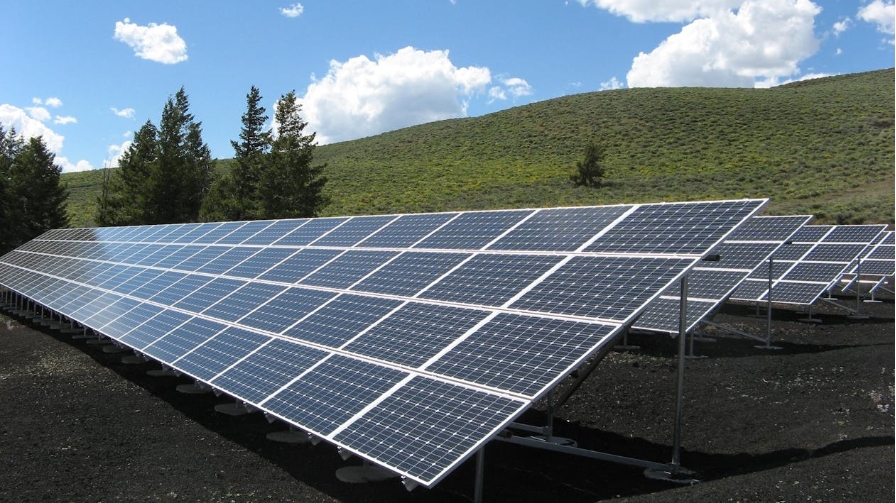The U.S. electric grid is facing the greatest transformation in a generation, driven by the explosive growth of AI, data centers, and the relentless push for clean energy. Texas and Arizona are right at the epicenter of this change, becoming the nation’s proving grounds for next-generation power systems. For utilities, cities, and businesses across the Southwest, the question is not just how to keep up, but how to get ahead in a world where energy resilience and digital innovation go hand in hand.
AI’s Unstoppable Energy Appetite
We are witnessing a digital gold rush in the Southwest. Tech giants and AI startups are building hyperscale data centers at breakneck speed from Dallas-Fort Worth to Phoenix. Analysts predict that by 2030, U.S. data centers could consume up to 8 percent of the nation’s electricity, more than double today’s share. The driving force is the rise of generative AI, cloud computing, and always-on digital services.
Texas and Arizona have emerged as prime locations for these investments. Both states offer affordable land, abundant sun and wind resources, pro-business regulations, and fast-growing tech workforces. In the past year alone, announcements of new AI-ready campuses, tech parks, and energy-hungry industrial sites have set records for both states. In Phoenix’s West Valley, utility-scale battery plants and substations are rising alongside rows of server farms. In the Dallas area, power companies are fast-tracking new transmission lines and planning for round-the-clock demand surges from data centers and electric vehicle charging hubs.
Utilities Respond: The New Age of Grid Modernization
Meeting these demands means more than simply adding wires and transformers. Utilities in Texas (like ERCOT) and Arizona (like APS and SRP) are launching ambitious grid modernization strategies, investing in everything from advanced substations and transmission lines to the deployment of massive battery energy storage systems. Here’s how the landscape is shifting:
-
Advanced Transmission and Distribution: Both states are deploying high-capacity transmission corridors to connect renewable-rich rural areas with urban data centers and business districts. In Texas, new ERCOT corridors are designed to handle fluctuating loads and ensure grid stability, even during record-setting heatwaves or winter storms. Arizona utilities are expanding substation capacity and leveraging digital monitoring to instantly detect faults or overloads.
-
Utility-Scale Battery Storage: Grid-scale batteries are now essential infrastructure. Texas leads the nation in battery installations, with over 8 gigawatts installed or in development. Arizona is quickly following suit, highlighted by the 1,200 MWh Papago Storage project, which helps manage evening power demand and keep critical infrastructure running during outages.
-
Smart Grid Technologies: Utilities are embracing real-time monitoring, AI-driven load balancing, and demand response tools. These technologies make the grid more flexible and allow for rapid integration of new loads, whether that’s a row of AI servers coming online or a surge in residential solar generation.
Microgrids: The Local Solution for Resilience
The backbone of a modern grid is its ability to remain resilient in the face of disruption. That’s where microgrids come in. Unlike traditional centralized grids, microgrids can operate independently, integrating local renewable resources, energy storage, and backup power to keep essential services running even when the main grid is down.
In Texas and Arizona, microgrids are becoming a must-have for:
-
Data Centers: Downtime is not an option when millions of dollars in transactions or real-time AI processing are at stake. Microgrids provide instant failover, on-site renewable integration, and flexible capacity for rapid scaling.
-
Hospitals and Research Campuses: Life-saving equipment and high-value research cannot pause for a blackout. Microgrids keep the lights on, refrigeration units cold, and lab data safe through outages.
-
Industrial Parks and Critical Infrastructure: Microgrids support factories, water systems, and emergency response centers, turning reliability into a business advantage.
These localized systems also allow for tailored energy strategies. A microgrid at a Phoenix data center might combine rooftop solar, utility-supplied backup, and lithium-ion batteries, while a hospital in Houston could use a blend of fuel cells and fast-responding battery storage for uninterrupted operations.
The MWC Advantage: Project Management for the Modern Grid
As the grid evolves, so does the complexity of designing, permitting, and delivering these projects. Successful grid modernization is not just about choosing the latest hardware, it’s about orchestrating dozens of moving parts, from feasibility studies and system integration to regulatory compliance and community engagement.
That’s where Mountain West Consulting (MWC) excels. Our team brings deep experience in:
-
Feasibility Analysis: We assess the technical, financial, and operational readiness of your facility for microgrid deployment or grid upgrades. Our experts model load profiles, simulate outage scenarios, and identify the optimal mix of technologies for each client.
-
Permitting and Compliance: Navigating local, state, and federal requirements is a full-time job. We guide clients through interconnection, environmental reviews, and incentive programs, ensuring your project stays on track and compliant.
-
Stakeholder Engagement: No energy project succeeds in a vacuum. MWC works closely with utilities, local governments, and community leaders to secure buy-in and align project goals with broader resilience and economic development plans.
-
System Integration and Commissioning: Our project managers coordinate every step, from equipment procurement and vendor management to installation and system testing, ensuring a seamless transition from planning to full operation.
We know that every organization’s needs are different. That’s why we deliver custom solutions, whether you are retrofitting a legacy campus or building a greenfield microgrid for a new AI facility.
What’s Next? Action Steps for Energy Leaders
If you are a facility manager, executive, or utility planner, now is the time to prepare for the future:
-
Assess Vulnerabilities: Understand where your facility or community is most exposed to outages, load spikes, or regulatory risks.
-
Plan for Flexibility: Design your infrastructure to handle future growth, emerging technologies, and new business models. Think modular systems, scalable batteries, and microgrid-ready campuses.
-
Partner for Success: Work with a project management team that understands both the technological and regional landscape. MWC offers the hands-on expertise needed to move from vision to reality.
Conclusion: Building Tomorrow’s Grid Today
Texas and Arizona are leading the charge into the future of energy. The convergence of AI, rapid digitalization, and clean energy is creating both enormous opportunities and unprecedented challenges. Grid modernization, resilient infrastructure, and the integration of microgrids are no longer optional. They are business imperatives for organizations that want to stay competitive and secure in the digital age.
At Mountain West Consulting, we are proud to help our clients design, deliver, and operate the next generation of power systems. If you are ready to modernize your grid, improve resilience, or explore microgrid solutions, we invite you to start the conversation with us today.


Recent Comments